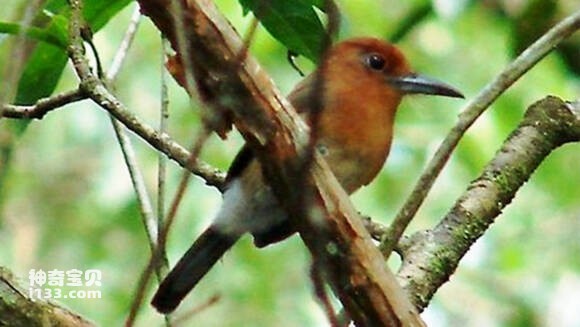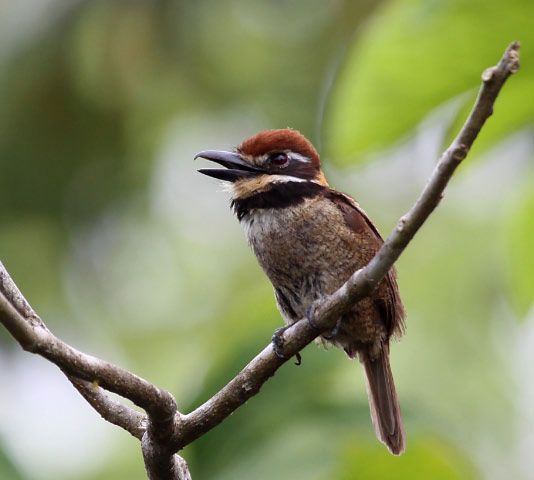Chestnut-headed Nunlet
IUCN
LCBasic Information
Scientific classification
- name:Chestnut-headed Nunlet
- Scientific Name:Nonnula amaurocephala,Chestnut-headed Puffy-headed Pier
- Outline:Climbing birds
- Family:Eriformes
Vital signs
- length:14-16.5cm
- Weight:25g
- lifetime:No verification information yet
Feature
Its plumage is unique among puffins.
Distribution and Habitat
The chestnut-crested auk is found in the upper Amazon Basin in southern Venezuela; eastern Colombia, Ecuador, and Peru; northern Bolivia; and western Brazil. It is found in many forest types, but usually near water sources. For example, terrestrial and Varzea forests, early successional and secondary forests, and corridor forests. It also occurs in bushland away from water sources. It usually remains fairly low, ranging from scrub and understory to under the tree canopy, often roosting within 6 m (20 ft) of the ground. Its altitude is usually below 660 m (2,200 ft), but as high as 1,000 m (3,300 ft) has been recorded in Peru and as high as 1,200 m (3,900 ft) in Ecuador.
Appearance
The chestnut-crowned puffin is 14 to 16.5 cm (5.5 to 6.5 inches) long and weighs about 25 g (0.88 oz). Its crown is maroon, the nape of its neck is bright reddish-orange, and the rest of its upper body is brown, with some light stripes on its back and many on its rump. The tail is long, narrow and a warm dark brown color. It has thin white eyebrows, black cheeks and lower throat with a white line in the middle, and a reddish-white chin and upper throat. The chin feathers curl at the base of the bill. There is a white band under the black throat. Except for the lower abdomen, the rest of the lower body is dark yellow with fine dark markings. The beak is black, the eyes are red to brown, and the feet are brown to greenish gray.
Details
The Chestnut-crowned Auk (scientific name: Bucco Macrodactylus) is a bird in the family Aukidae, Aukidae, and Auklet genus. Distributed in Bolivia, Brazil, Colombia, Ecuador, Peru and Venezuela.
Chestnut-crowned storks are variously classified in the genera Bucco, Argicus and Cyphos. As of 2021, the International Commission of Ornithology (IOC) and the Clements classification classify it as Bucco, while BirdLife International's Handbook of the Birds of the World (HBW) assigns it separately to Cyphos. Although a portion of the Venezuelan population is sometimes isolated as B. m., all three treat it as a single type. Colonsis.
Almost nothing is known about the breeding phenology of the chestnut-crowned auklet. One of the nests is a termite nest located about 2.5 m (8 ft) up in a tree.
The song of the chestnut-crested sandpiper is “a series of plaintive but suddenly rising notes, ending with ‘chirp, chirp, pup pup pep pep peep peep pip pip pip piz’”.
The International Union for Conservation of Nature has classified the chestnut-crested puffin as a species of least concern. It has a very large range, but the population size is unknown and is believed to be declining. [1] It is considered uncommon to locally common in various parts of its distribution range.










